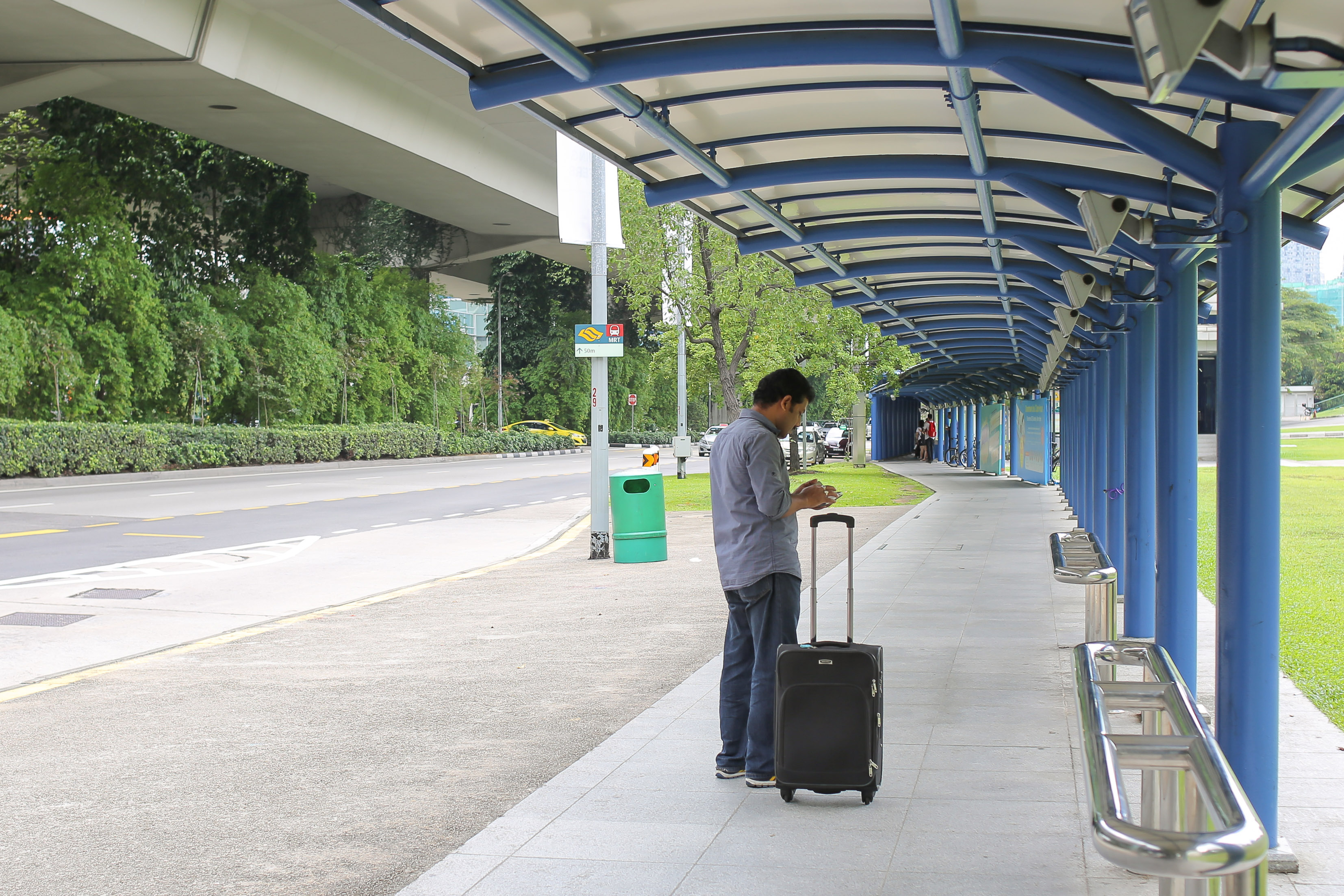In December last year, I was returning home from Yio Chu Kang swimming pool when I saw something which took my breath away: a brand new covered walkway.
Not any regular ol’ covered walkway, but a covered linkway built on steel girders, spanning a storm drain of some 15m. Awed by this miracle of urban engineering, I did what any normal Singaporean would do. I took a picture with my phone and sent it to the Facebook page ‘Singaporeans Supporting The Government Because of Covered Walkways’.
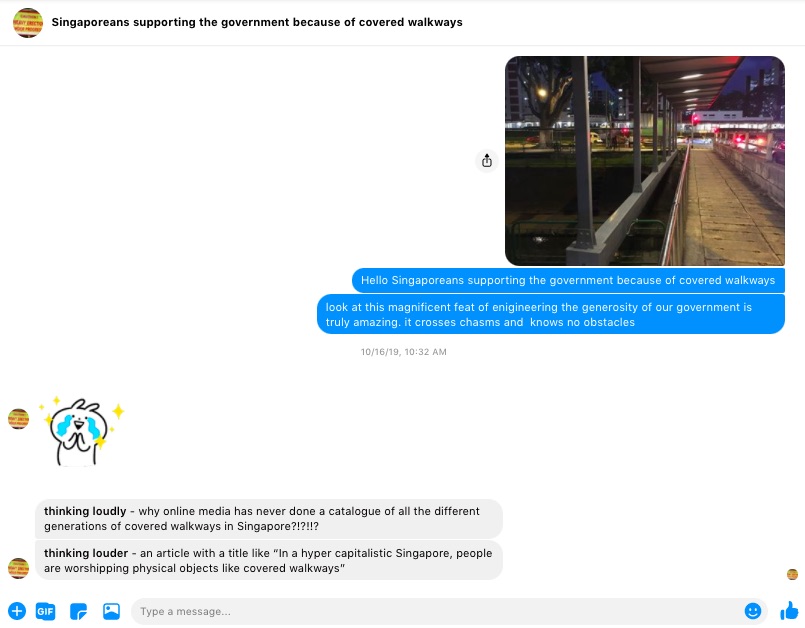
I even included a caption expressing my gratitude to the PAP.
However, to my disappointment, my contribution was not appreciated by the admin(s). Not only did they decline to share my picture, they suggested that I—because I work in ‘online media’—should write a longer listicle about the many different types of covered walkways in Singapore.
“Just thinking out loud,” the admin added, with a hint of passive-aggression.
Heartbroken by this rejection, I was tempted to unfollow their page. However, curiosity got the better of me. How many different types of walkways have we built and how did we become a sheltered walkway nation?
The Origins Of The Covered Walkway In South-east Asia
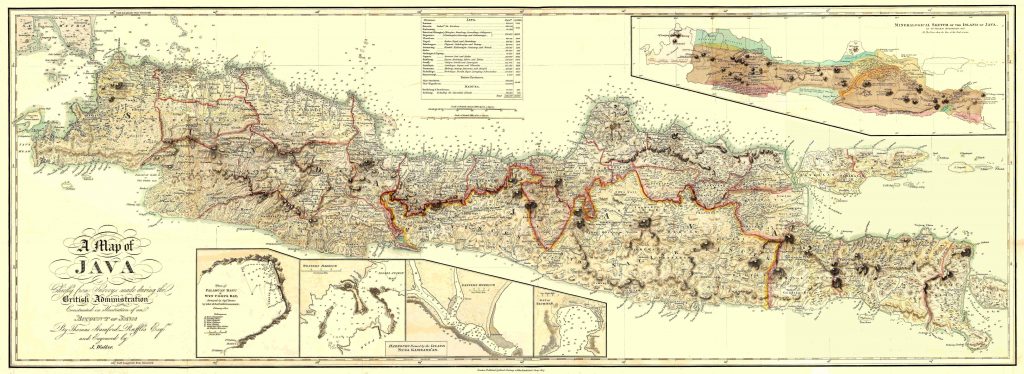
The history of the covered walkway in Singapore began in the usual manner: With a piece of paper signed by Raffles. The Town Plan of 1822 (the ‘Jackson’ Plan) did not just divide Singapore into the familiar zones of Dhoby Ghaut, Chinatown, Kampung Glam, etc. It also mandated the construction of Singapore’s first covered pedestrian walkways.
Article 18 of the plan states: “Description of houses to be constructed, each house to have a verandah open at all times as a continued and covered passage on each side of the street”. These ‘verandahs’, built into shophouses and providing protection from both sun and rain, would later be known as the five-foot-ways. (Even though their actual width ranged between 6-8 feet.)
As for their purpose, the plan states: “A still further accommodation will be afforded to the public by requiring each house should have a verandah of a certain depth”.
Since Raffles was not an architect—or a man who did much walking—historians have often speculated on how he dreamed up the idea. After all, with malaria endemic and fresh water running short, you would think that Raffles had bigger problems than UV protection—but apparently not. Furthermore, covered walkways were not so common in Great Britain, which had a shortage of shelter despite its ceaseless rain.

A number of theories have since emerged. According to a 1993 paper in the Journal of the Malaysian Branch of the Asiatic Society, titled The ‘Shophouse Rafflesia’: An Outline Of Its Malaysian Pedigree And Its Subsequent Diffusion In Asia, the author whimsically dates Raffles’ invention of the covered walkway to 1810.
As the story goes, he was being carried across a verandah-less Calcutta in his Game-of-Thrones style palanquin, when it began pouring heavily. Drenched by rain, enraged, and apparently ignorant of the existence of umbrellas, Raffles swore vengeance against the sky by building covered verandahs everywhere he went.
A more orthodox history points to the Dutch East Indies. In the Dutch capital of Batavia (i.e. Jaya Karta/modern-day Jakarta), the Dutch East India Company (VOC) had created regularly lined streets with overhanging eaves for shelter. Raffles, who served as the governor-general of the Dutch East Indies and wrote The History of Java, certainly had both time and inclination to observe the local architecture—when he was not busy attacking it.
Indeed, his The History Of Java does make special mention of women preoccupied with “spinning and weaving on an elevated verandah in front, where they are protected from the rays of the sun, by an extended projection of the pitch of the roof.”
But how did the Dutch come up with it? After all, Amsterdam has many charming—uh—cafes, but it is a city known for canals rather than cover.
This is where the history ends and pseudo-intellectual guesswork begins. Depending on their mood and ideological fetish, experts have variously attributed the covered walkway to either Southern China, Javanese Vernacular architecture, or the House of Habsburg (Spanish branch).

The evidence is as follows. One claim is that our covered walkways are the long lost descendants of Southern Europe’s colonnaded piazzas. When Spain colonised the *Philippines*, King Phillippe II issued a Royal Ordinance for Manila in 1573.
Article 122 of this ordinance reads: “The while(sic) piazza and the four main streets diverging from it shall have arcades, for these are a great convenience for those who resort for trade.” The Dutch, who fought a number of wars with the Spanish crown, could certainly have copied from Manila.
Other writers point to China, where a subtropical climate likewise made cover quite necessary. In Singapore Shophouse, writer Julian Davison suggests that Singaporean shophouses—and their covered walkways—had come from the Southern Chinese provinces of Guangdong and Fujian, brought here by successive waves of Chinese immigration.
Mr Davison bases this argument not on historical records, but on the architecture itself. The “air wells, firewalls, and even Raffles’ celebrated five-foot-way” were endemic to Southern China, “where one typically encounters similarly-built houses separated by narrow lanes”. His view is echoed by the celebrated Malaysian eco-architect Ken Yeang, whose identifies the pavilion-sheltered bridges inside Chinese ‘courtyard houses’ (四合院) as an inspiration for the covered walkways found in both Singapore and his hometown of Penang.
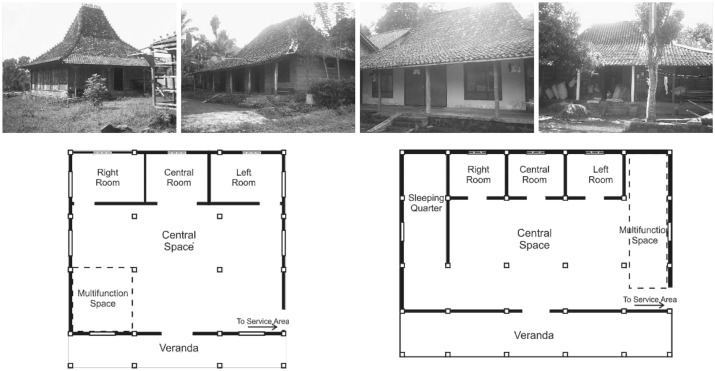
However, the most widely-accepted hypothesis traces the covered walkway to the Javanese vernacular architecture, which made ample use of verandahs wherever possible. According to The Past in The Present: Architecture In Indonesia, architecture in pre-colonial Indonesia differed widely from region to region. Iban builders would create structures completely different from the Acehnese, whose outward-leaning gables would look like alien spaceships to the denizens of Sulawesi.
In Java, however, verandahs (also called ‘emperan’ or later ‘serambi’) were a distinguishing feature of the traditional ‘joglo’ house. They were found both in the front and back of each home. Javanese mosques also made frequent use of verandahs, which ran all around the mosque proper to provide not just shelter from the rain, but also a space where religious justice could be meted out.
The Dutch likely emulated this feature when building Jaya Karta into Batavia. Early Batavian houses initially featured a private ‘stoep’ (verandah) which was separated from the pedestrian area by a low fence/bollards. Over time, the fence disappeared, allowing for free passage between the steps of different houses, which were sheltered from sun and rain by their ‘overhanging roof eaves’. The end result is a space where one could linger for a smoke in the evening while chatting with their neighbours.
Coincidentally—or perhaps not so coincidentally, these ‘serambis/stoeps’ measured five feet wide.
Perpetual Twilight
By the mid-1800s, five-foot ways were to colonial Singapore what money shots of MBS are today—a tiresome cliche. Western travellers in particular simply could not get enough of these ‘exotic’ thoroughfares.
In 1897, British traveller Isabella Bird wrote of the ‘perpetual twilight’ which one encountered in those “long shady alleys, in which crowds of buyers and sellers would chaffer over their goods”. Major James Low, a British civil servant likewise spoke fondly of them: “A stranger may well amuse himself for a couple of hours in threading the piazzas in front of the shops, which he can do unmolested by sun, at any hour of the day”.
As a tourist trap, the five-foot-way was a great success. However, as a means of getting from point A to point B, it proved to be a total failure.

More often than not, business owners considered the space merely an al fresco extension of their business. Whatever space the shophouse tenants did not utilise, it was taken up by peddlers, hawkers, barbers, scissor-sharpeners, letter-writers, parrot astrologers and even human corpses improperly disposed of. During the afternoon, they were obstructed by satay men taking a between-shifts nap. By night, they were blocked by sleeping coolies because the open air made for a better bunk than the dank cubicles upstairs.
This is all well and good, except it made the street impassable. Originally intended to be a conduit for foot traffic, they became so busy with activity that pedestrians ended up on the roads and in the way of oncoming traffic.
Complaints began pouring in—mostly from Europeans residents who had no business with five-foot ways. An ST forum writer from the 1843 complained that “the natives have very coolly appropriated to their own special use by erecting stalls in it and making it a place for storing goods.” Other members of the public called the obstruction a “grave menace”, and bitched about the “risk of sunstroke or being run over”.
Rather predictably, the entire thing descended into racism, with Europeans blaming the Asian barbarians. One article from 1898 claimed that passageway-blocking was an Asian defect, caused by Singaporeans who were “brought up in places where our more civilised views do not prevail”.
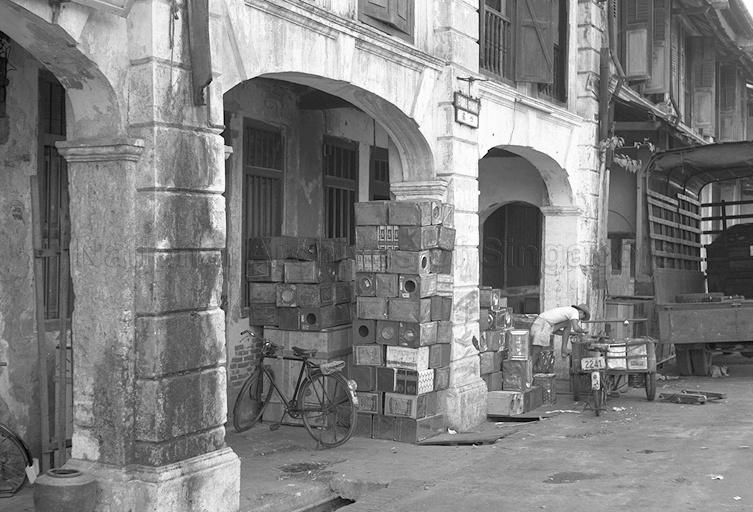
In truth, this sorry state of affairs was due to confused government policy, which never made clear whether the verandah/five-foot way was public passage or private property. The Summary Jurisdiction Ordinance of 1872 best sums up it. On one hand, it declared these verandahs to be “public thoroughfares for foot passengers”.
In the same breath, it also stated—categorically—that they were subject to “all rights of property of owners of houses”.
This naturally made enforcement impossible, or at least legally dubious. It culminated in Singapore’s one-and-only covered walkway Intifada. In 1872, the municipal commission sent its inspectors into Kampong Glam to clear the streets. As they moved, unrest began fermenting. Businesses shuttered, Secret Society members—who collected protection money for the use of these five-foot ways—threw rocks and smashed windows. Eventually, over the course of three days, the entire country came to a standstill as police and community leaders were sent in to stymie the mob.
Eventually, the municipal authorities were forced to compromise because the ‘5FW’ had taken on a life of its own. As long as two people could walk side-by-side unimpeded, the British Empire would look away and pretend they never see.
Decline And Revival
From the 1900s onwards, the covered walkway entered into a long period of stagnation and decline. Shophouses had fallen into disrepute because they had become overcrowded migrant dormitories breeding disease. The Singapore Improvement Trust (SIT) was tasked with improving the town, but it could not even solve the bigger problem of overcrowding and homelessness. There was no time for the luxury of covered walkways.
Self-rule and independence was a watershed moment … but not for pedestrians. In the first decades of its existence, HDB focused on solving the problems that it had inherited from the British. Comfort was not yet a consideration. Neither the biography of HDB chairman Lim Kim San, nor the HDB’s own history—Housing A Nation: 25 Years of Public Housing In Singapore—mentions covered walkways, even in passing.
The Public Works Department (does what it says on the tin) had a special Walkway Unit, but its efforts were, uh, quite grounded. Its internal magazine Spectrum—1977 edition—waxes poetic about “multi-hued non-slip ceramic”, but it did not consider building more verandahs or linkways.

This dire state of affairs did not change until the late 1980s and 1990s, when covered walkways finally returned from the dead.
The process was precipitated by the Estate Renewal Strategy (ERS) under Minister S. Dhanabalan. When visiting Toa Payoh, he noted—with some alarm—the contrast between the HDB flats’ aging facades and well-appointed interiors. Compared to the newer flats of Bishan not twenty minutes away, Toa Payoh had become decidedly shabby in appearance.
Thus, the ERS was born. Like most government programmes, it was a many-headed beast, shrouded in acronyms and designed to confuse future historians. Improvements within residents’ homes, like electrical maintenance or toilet upgrading, fell under the HIP (Home Improvement Programme). Meanwhile, the renovation of the estate itself was split between the MUP (Main Upgrading Programme) and the pre-emptive IUP (interim upgrading programme)—which was targeted at younger estates.
Most importantly, both MUP and IUP called for the construction of—wait for it—covered walkways. As Straits Times Generalissimo Warren Fernandez noted in his book Our Homes: Fifty Years of Housing A Nation, the improvements included “new paint for the blocks, new lift lobbies, modern playgrounds, covered walkways, and study corners”.
After nearly a century in exile, the covered walkway had made its triumphant return.
But why now? What changed in the1980s/1990s in Singapore? What made covered walkways so suddenly en vogue? Mr Fernandez’s book might have you believe that our government dreamed it up alone in a eureka moment, but the right answer lies in a confluence of factors.
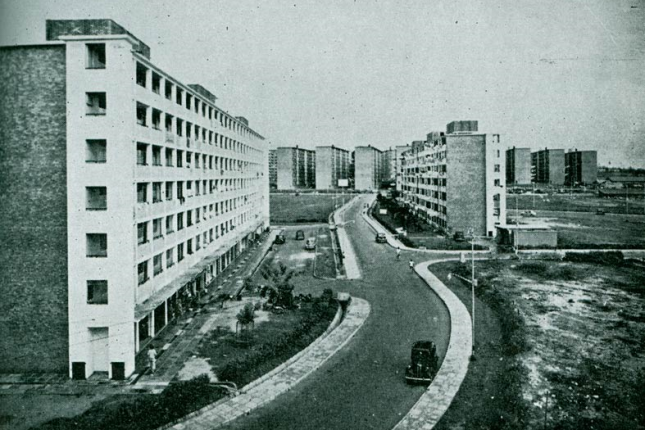
For starters, Singapore has been growing in (1) affluence in the decades post-independence. Since the 1970s, HDB built not just to meet the need for shelter, but also to fulfil the more esoteric desires of Singaporean home-owners. Covered walkways are a natural extension to lifts-which-stop-on-every-floor and exercise corners.
After all, if home-ownership is a tool of nation-building and political legitimacy as Chua Beng Huat theorises, then it must follow that our houses must reflect the citizenry’s changing priorities. Further, with HDB flats becoming Singaporeans’ (2) main asset, shabbiness is not just unsightly, but politically hazardous.

For the Public Works Department, however, the walkway was a means to a very different end. Like the HDB, there was rapid expansion of covered linkages in the 1980s and 1990s. Unlike the HDB, the PWD used covered walkways to (3) encourage the use of public transport. By linking MRT stations and bus shelters seamlessly to homes, it reasoned, more Singaporeans would take the train instead of calling for Grab.
In 1989, they launched the Walkway Improvement Programme—starting with Orchard Road. In Spectrum magazine, the PWD made a stunning admission: Singapore’s early walkways were built in a ‘piecemeal fashion’ with ‘insufficient attention’. They were often ‘discontinuous’ and ‘uneven’, with ‘service roads which separated the open walkways from the covered walkways’.
Repenting for its past mistakes, it vowed to do the following:
- to integrate privately-built walkways into the overall walkway scheme
- the creation of a comprehensive covered pedestrian linkage system along Orchard road
- the provision of covered linkages between MRT stations and bus stops and nearby developments.
Starting with the civic district and moving outwards, they would remake walking into a pleasure. Henceforth, the agency would be sensitive to the needs of pedestrians, whether young, old or disabled, to ‘convey a caring image of our city streets’.
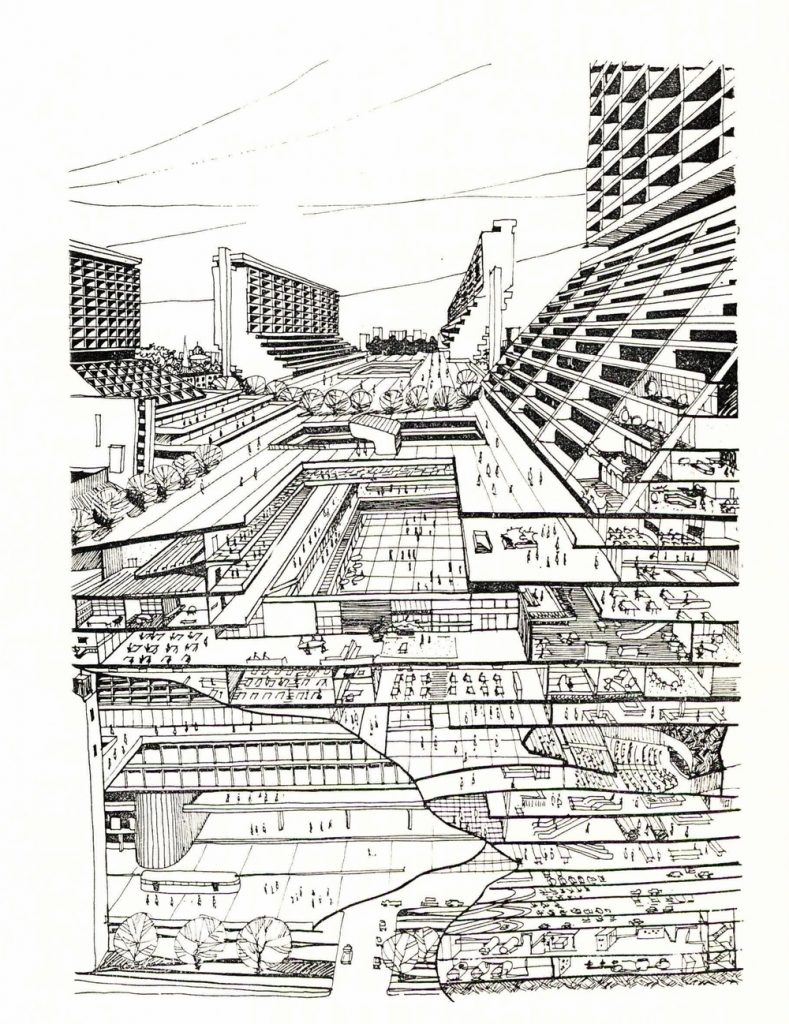
These practical schemes were preceded by (4) deeper rumblings at the philosophical and ideological level. In the 1970s, post-colonialism emerged as a mode of thinking and gained widespread acceptance in fields like history, sociology and literature. Architecture was no exception and many a young designer began re-thinking the urban environment along historical lines.
Amongst them was the aforementioned Malaysian architect Ken Yeang, who designed our National Library and called for KL to be re-built with the ‘verandah’ as its principle organising feature.
In Singapore, the movement towards ‘Tropical Architecture’ is best embodied by Architect Tay Kheng Soon. In his manifesto Mega-cities In the Tropics: Towards an Architectural Agenda For the Future and his essay The Tropical City, the contrarian architect argued against a blind aping of the West. An ‘unlearning process’ was necessary to free our minds from the dominance of ‘European architecture’ and ‘northern models’.
In practical terms, this meant dethroning the wall as our ‘main architectural element’ and replacing it with the roof. Walls protect one from draughts, while roofs protect one from the sun and rain.
As a negative example, he cited the ISEAS building where he gave his speech: “You have a building here at ISEAS that you can’t enter without getting wet because the shelter stops just short of the road. There is no canopy over the road … because the laws are not responsive to the tropical environment.” As a solution, he evangelised ‘linkage and connectivity’ with ‘bridging structures between buildings’, as well as a uniquely Singaporean design language of ‘line, edge, mesh and shade’.
It is difficult for me to ascertain which of these factors were more influential, or how they are linked. Just as the rise of Nazi Germany had no single cause, I do not think the covered walkway’s revival can be traced back to one mythic point of origin.
All I know is, you can walk from Yio Chu Kang MRT to my parents’ house without an umbrella because by the 2000s, covered walkways had become Gospel. They were no mere afterthought, but a catechism for planners and builders, with meticulous instruction on width, height, material, and accessories. There was even advice on how to avoid ‘ponding’.

By the mid-2000s and 2010s, government planners began to demand more from our covered walkways, than even Singaporean parents during PSLE season . According to the 2006 HDB Universal design guide, the ideal covered walkways should be 2.4m in width and between 2.2—2.4m tall, with an overhang of 0.6m on the side of the supporting pillar. The gradient should be 1:12, with integrated lighting in the design, and sound-dampening features where appropriate.
In terms of placement, they should avoid abutting windows/balconies (to prevent burglary), while connecting all residential blocks, precinct pavilions and other ‘major nodes of activity’ like childcare centres or bus stops. A 2m firebreak is compulsory if the linkway abuts a stairwell, and concrete collars must be constructed for superior load-bearing capabilities. Glass is absolutely forbidden as a roofing material for obvious reasons and the entire structure must be setback from the road by a minimum of 1m. ‘Foliage plants’ are encouraged over ‘trellises’ because of the shade they offer, but overzealous horticulturalists must take care not to impede wheelchair-access when adding vegetation.
Beyond that, the truly accomplished covered linkway must also have a thorough knowledge of singing, dancing, modern languages and memes; as well as a certain something in his air and manner of providing shelter.
This is a joke—but not really. Raffles wanted ‘uniformity’ and ‘unobstructed passage’, but our modern verandahs have long since slipped the surly bonds of earth, to touch the face of God. They have found a calling. They are no longer mere features of the landscape, but—just like the HDB flats they connect—an integral part of the nation.
Or as a quote from the HDB design handbook explains: “The entire network of pedestrian routes serves not only as a circulation system but also as spaces in which one bumps into friends and acquaintances and stops to exchange greetings and news. Such brief and casual meetings are the most basic but absolutely necessary ingredient for building a sense of belonging”.
The golden age of the sheltered walkway had finally come to pass.
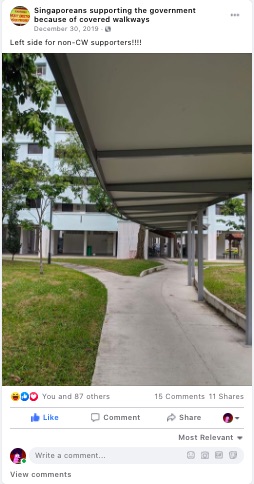
Detour: One theory floated by Mothership suggests our Void Decks are actually just covered walkways writ large. According to a biography E.W. Barker: The People’s Minister, Minister Barker’s right-hand man was driving through Toa Payoh when he saw children getting wet because the ground floor was all occupied by flats. Mr S.S. Dhillion, then thought of raising the buildings one level up, so there will be shelter for these homeward-bound children.
Mothership head honcho Martino Tan interprets this passage as evidence that Void Decks were not created as communal spaces but as rain shelters, but I’m not so sure. Most of the government’s official statements on the matter refer to the void deck as ‘shared common space’ which ‘created opportunities for residents to meet’, or a venue for ‘occasional social rituals’. Indeed, Warren Fernandez’s official biography of the HDB emphasizes ‘social cohesion and bonds’ and ‘forging neighbourly ties’ over the more prosaic duty of keeping residents dry.
Did the HDB create a covered walkway and then backtracked to claim credit when they realised the void deck’s full social potential? Or did they plan to kill two birds with one stone from the very beginning? Are we all just living in a very tall covered walkway? I have no idea—perhaps HDB can clarify.
200
On Sept 18 2018, Singapore celebrated its real Bicentennial, one year ahead of schedule, when LTA completed 200km of covered walkways in Singapore. It was an occasion marked by little fanfare. There were no elaborate multimedia displays or seminars in the National museum. Nobody bothered to disappear a statue.
In its press release, LTA merely said they would “continue to add to the network of sheltered walkways”.
However, I think it is past time we examined the political and ideological meaning of our true national icon—the covered walkway. The Merlion came and went. Everyone soon tired of posing in front of the Jewel waterfall. Five-foot ways have been studied by historians and heritage enthusiasts alike. Meanwhile, little has been written on those sterile modern post-90s covered linkways which now un-punctuate our landscape like so many em dashes.

So what do we make of these sheltered linkways? What do they symbolize—beyond the infinite wisdom of the PAP?
One possible answer lies in Cherian George’s (in)famous essay ‘Air-conditioned Nation’, which begins with an (un)covered pavement, before going on to dissect the relationship between comfort and government. After all, what is the sheltered walkway if not an elongated aircon for pedestrians?
It is also the stance taken by ‘Singaporeans Supporting The Government Because of Covered Walkways’, which satirizes those who are oh-so-willing to trade tangible material comforts for abstract civil liberties. Vote WP, see what happens to your linkways.
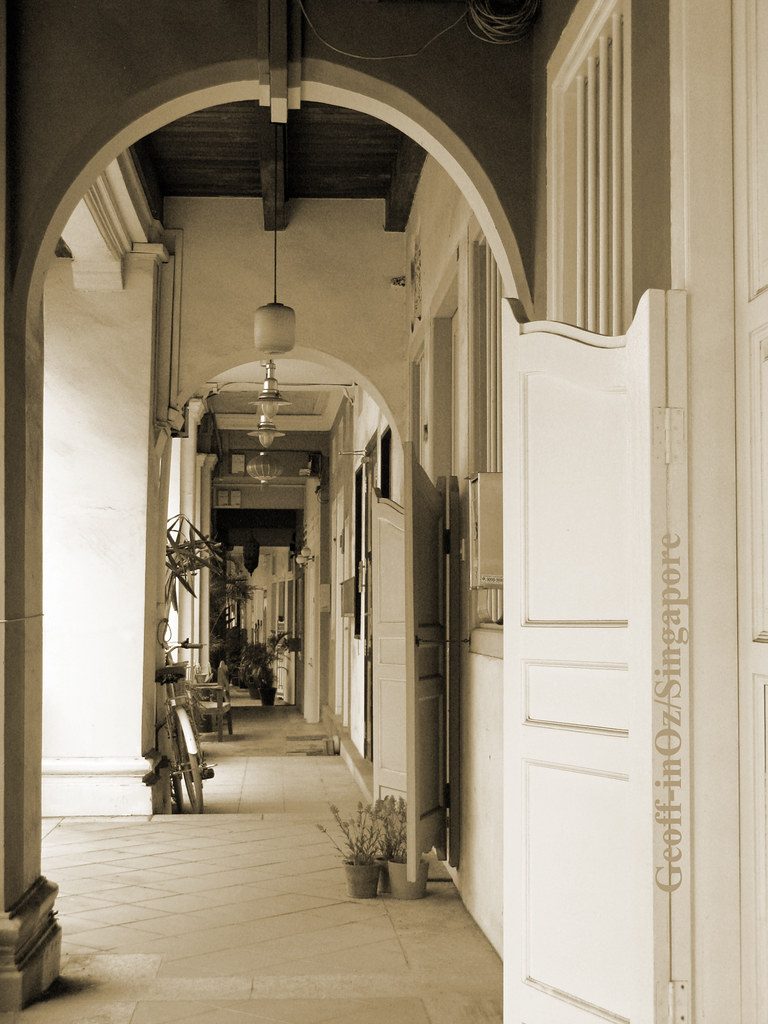
However, I do think there is more to the sheltered walkway than just this old tug-of-war between freedom and comfort. According to the HDB’s own quote, the covered linkway is more than just a shelter from the elements. The connectivity it provides turns precincts into communities, and whole estates into heartlands. For the longest time, it has been the goal of Singapore’s planners to provide not just a roof over our heads, but to encourage us to think of that roof as a home.
If nation-states are just ‘imagined communities’, maybe our imagination could be helped along if we bumped into the same few people everyday under the covered walkway. We would come to think of the smoking uncle, the young couple going to Sheng Shiong and the shirt-tuck-out students as neighbours, friends, fellow citizens. A ‘sense-of-belonging’ would grow from these chance encounters.
However, the linkways end when HDB estates bump into landed areas, and condos are of course segregated by walls and security logbooks. On the other end, migrant worker dormitories are rarely linked to anything—except maybe the ICU. Are they part of the nation? Or something standing outside it because of wealth or policy?
Perhaps this is the great limitation of the sheltered walkway as a nation-building exercise in a time of growing ‘social stratification’. The linkages are supposed to connect Singaporeans to one another, but those with means have long since left for a different city. In the sheltered walkway nation, you will not bump into each other—unless there’s a traffic accident.
Sources:
An Anecdotal History Of Old Times In Singapore
The ‘Shophouse Rafflesia’: An Outline Of Its Malaysian Pedigree And Its Subsequent Diffusion In Asia by Jon S.H. Lim
The History Of Java by The Talented Mr Raffles
The Tropical Verandah City: Some Urban Design Ideas for Kuala Lumpur by Ken Yeang
Singapore Shophouse by Julian Davison
The Past In The Present: Architecture In Indonesia by Amanda Acmadi (Author), Maaike Boersma (Author), Kees van Dijk (Author), Martien de Vletter (Editor)
Gimme Shelter: The Five Footway Story by Fiona Lim
Housing A Nation: 25 Years Of Public Housing by Stephen H. K. Yeh, Aline K. Wong
Lim Kim San: A Builder Of Singapore by Asad Latif
Our Homes: 50 Years Of Housing A Nation by Warren Fernandez
Mega-cities In the Tropics: Towards an Architectural Agenda For the Future
Spectrum magazine by Public Works Department
HDB Universal Design Guide 2005
The Air-conditioned Nation by Cherian George
With support from ‘Singaporeans Supporting The Government Because Of Covered Walkways’
Did I miss something about Singapore’s covered walkways? Write to me at community@ricemedia.co.

